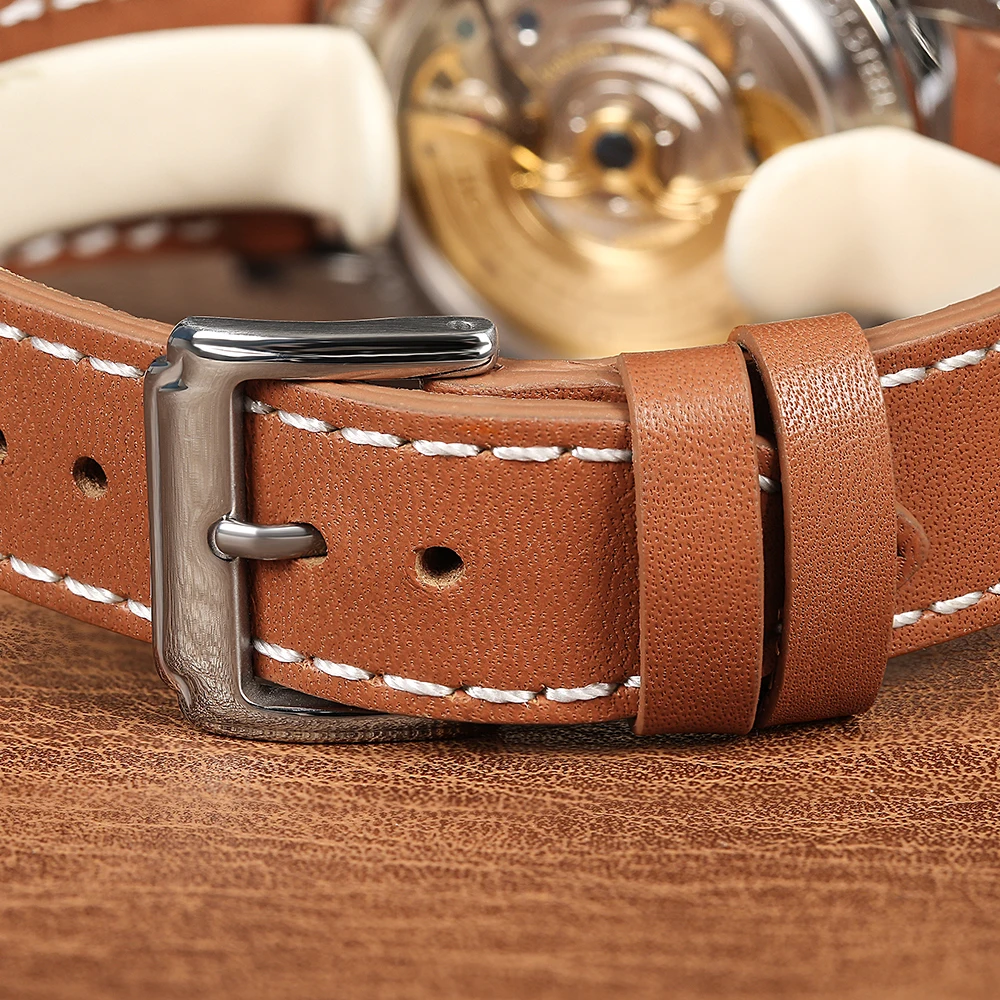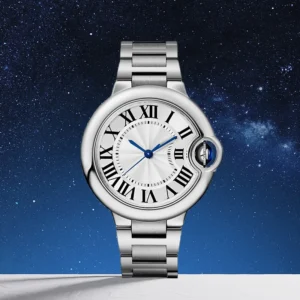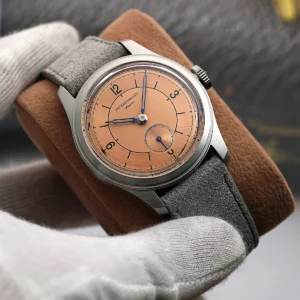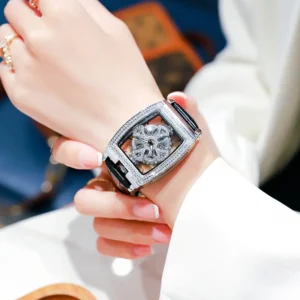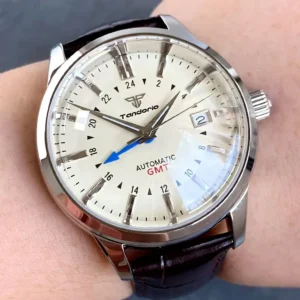Introduction: The Quiet Confidence of a Slim Profile
In the world of horology, few design elements communicate sophistication as effectively as a slim watch case. Generally defined as timepieces with cases measuring under 10mm in thickness, slim watches stand in elegant contrast to their standard (10-12mm) and thick (12mm+) counterparts. This distinction isn’t merely numerical—it represents a fundamental approach to watchmaking that values refinement and subtlety.
The journey toward slimmer timepieces began with pocket watches transitioning to wristwatches in the early 20th century, but the true quest for thinness accelerated in the mid-century when watchmakers began competing to create ever more svelte movements. What started as technical innovation has evolved into an enduring aesthetic preference that transcends horological trends.
Today, slim watch cases continue to captivate both dedicated enthusiasts and casual wearers alike. Their persistent appeal stems from a perfect balance of comfort, elegance, practicality, and remarkable craftsmanship—qualities we’ll explore throughout this guide. Understanding thin case design in modern watches helps us appreciate why these timepieces remain a timeless choice worth considering for any collection.
Superior Comfort and Wearability: The Physical Advantage
The most immediately noticeable benefit of a slim watch is how it feels on the wrist. This physical advantage manifests in several meaningful ways:
- Reduced Weight: Slim watches typically weigh 30-50% less than their thicker counterparts, significantly reducing wrist fatigue during all-day wear.
- Better Ergonomics: The lower profile conforms more naturally to the wrist’s contours, creating a more harmonious relationship between the timepiece and its wearer.
- Minimized Interference: Without excessive bulk, slim watches allow for unrestricted wrist movement and don’t catch on sleeve cuffs or pocket openings.
- Universal Fit: Slim cases are particularly accommodating for those with smaller wrists, offering proportional elegance without overwhelming the arm.
- Even Pressure Distribution: The lighter weight and better fit distribute pressure more evenly, eliminating the uncomfortable “pendulum effect” sometimes experienced with heavier watches.
Many watch enthusiasts describe the sensation of wearing a truly slim timepiece as “forgetting it’s there”—until they need to check the time. This is the paradoxical magic of excellent thin watch cases and their effect on comfort: they deliver their primary function without constantly reminding you of their presence.
Understated Elegance and Aesthetic Versatility
A slim watch case embodies the design principle that true elegance lies in restraint rather than excess. This understated approach to horology creates timepieces with remarkable aesthetic versatility:
The minimalist profile of a slim watch conveys sophistication without ostentation. Unlike bulkier watches that announce their presence, slim timepieces whisper rather than shout—a hallmark of genuine confidence and refinement.
Watchmakers and style enthusiasts often reference “the cuff test” when discussing dress watches. A properly proportioned slim watch slides effortlessly beneath a shirt cuff, emerging only when needed to check the time. This seamless integration with formal attire explains why slim watches remain the gold standard for business and formal occasions.
Beyond formal settings, slim watches demonstrate remarkable adaptability across various dress codes. Their clean lines complement everything from tailored suits to smart-casual outfits without creating visual dissonance. This versatility makes them ideal daily companions for those who navigate different social environments.
The reduced case height also draws greater attention to the watch dial—often considered the “face” of the timepiece. With less visual competition from a towering case, the subtle details of minimalist dress watch design become more prominent and appreciated.
Perhaps most importantly, slim watch cases have demonstrated remarkable staying power across decades of changing fashion trends. While case diameters have fluctuated dramatically over time, the appeal of thinness has remained constant, making slim watches a truly timeless investment rather than a passing trend.
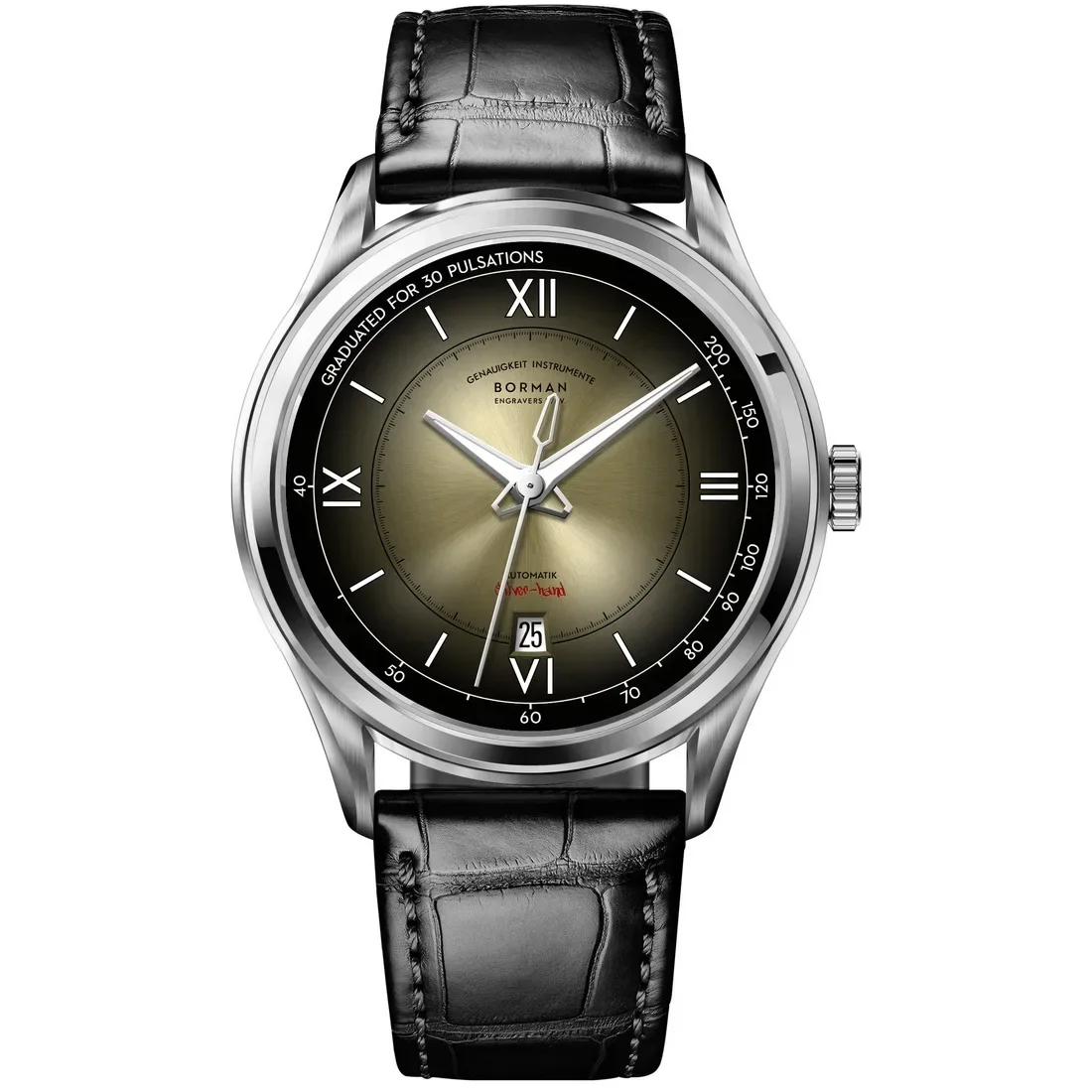
Practical Benefits in Daily Life
Beyond comfort and aesthetics, slim watches offer tangible practical advantages that become apparent in everyday situations:
Reduced Snagging Risk: The lower profile significantly decreases the likelihood of catching your watch on clothing, doorways, or furniture—a common annoyance with bulkier timepieces that can lead to scratches or even damage.
Lower Impact Vulnerability: Following the “lower profile, lower risk” principle, slim watches present less surface area to accidental impacts. When your watch sits closer to your wrist, it’s less likely to strike door frames or table edges as you move through your day.
Unobtrusive Functionality: Whether typing at a keyboard, reaching into tight spaces, or gesturing during conversation, slim watches stay out of your way while remaining accessible. This unobtrusive quality is particularly valuable in professional environments.
Simplified Dressing: The challenge of accommodating a thick watch when dressing—particularly with fitted shirts and jackets—disappears with slim timepieces. They don’t require special consideration when getting dressed or adjusting cuffs.
Perceived Absence: Many wearers of slim watches report the pleasant sensation of “invisible functionality”—having the utility of a wristwatch without the constant awareness of something substantial strapped to their arm.
As modern trends in thin watch profiles continue to evolve, these practical advantages remain consistent selling points for those who value functionality alongside form.
The Craftsmanship and Engineering Behind the Slimness
What makes slim watches particularly impressive is not just their external appearance but the exceptional engineering that enables their svelte profiles. Creating a thin yet robust timepiece represents one of horology’s greatest technical challenges.
The heart of any slim watch is its movement (the internal mechanism), which must be painstakingly designed to minimize height while maintaining accuracy and durability. Components that might be stacked in standard movements must be rearranged side by side, requiring meticulous precision and often innovative solutions to space constraints.
Material selection plays a crucial role in achieving slimness without sacrificing structural integrity. Advanced alloys, ceramic components, and high-tech composites allow for thinner parts that maintain necessary strength. Some ultra-thin watches employ the case back as part of the movement itself—a testament to ingenious space utilization.
The precision required to assemble these condensed mechanisms demands exceptional watchmaking skill. Tolerances are measured in fractions of a millimeter, with no room for error. This is why many slim watches come from manufacturers with decades or even centuries of horological expertise.
The engineering behind slim watch movements represents the watchmaker’s art at its most refined. Unlike adding complications (additional features), which is impressive in its own right, creating exceptional thinness requires the discipline to subtract while preserving functionality—a different but equally challenging form of horological mastery.
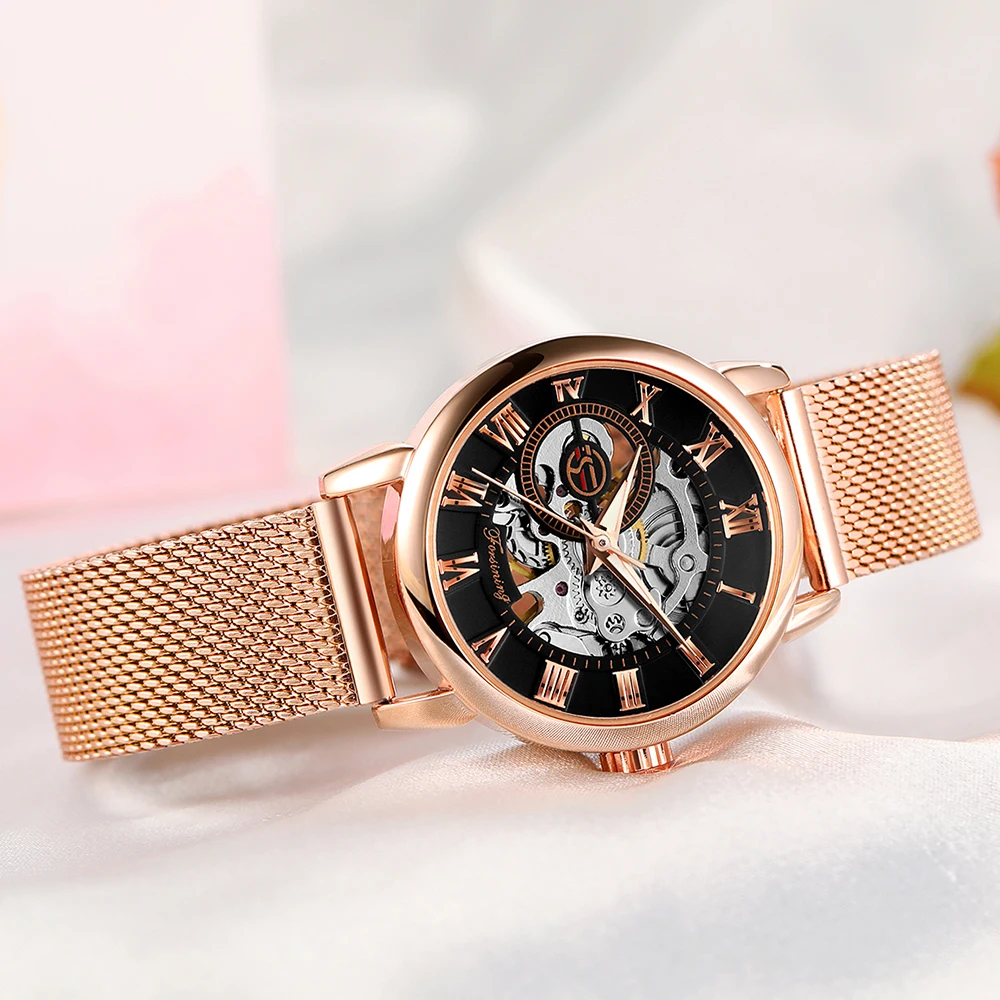
Slim vs. Thicker Watch Cases: A Comparative Perspective
To fully appreciate slim watch cases, it’s helpful to understand how they compare to their thicker counterparts:
| Characteristic | Slim Watch Cases (Under 10mm) | Thicker Watch Cases (12mm+) |
|---|---|---|
| Comfort | Superior for all-day wear, lighter weight | Can feel substantial, potential fatigue with extended wear |
| Formal Wear Compatibility | Excellent, passes “the cuff test” | May require cuff adjustments or remain visible |
| Casual Versatility | Understated, works with most attire | Makes a stronger style statement, may dominate some outfits |
| Durability Concerns | More susceptible to water pressure limitations | Often more water-resistant, robust |
| Visual Presence | Subtle, refined, emphasizes dial | Bold, commanding, emphasizes presence |
| Movement Complexity | Often simpler complications | Can house more complex movements and features |
This comparison illustrates that neither option is universally “better”—they serve different purposes and preferences. Thicker watches excel in situations demanding robustness and high water resistance, such as diving or outdoor adventures. They also make stronger visual statements and can accommodate more complex movement features.
Slim watches shine in professional and formal settings, offer greater comfort for daily wear, and project a more refined aesthetic. Understanding these differences helps explain why many watch enthusiasts eventually acquire both styles for different situations and moods. The visual differences between thin and thick watch cases create distinct impressions that serve different style objectives and practical needs.
When is a Slim Watch the Ideal Choice?
Certain scenarios particularly highlight the advantages of slim watch cases:
Formal Events: Weddings, galas, and black-tie occasions call for timepieces that complement formal attire without disrupting its clean lines. Ultra-thin formal watches represent the pinnacle of horological etiquette in these settings.
Professional Environments: Business settings, especially in fields like law, finance, or corporate leadership, often favor the understated elegance of slim timepieces that signal attention to detail without ostentation.
Comfort-Priority Wearers: Those who value all-day comfort above all else—particularly individuals with sensitivity to weight on their wrist—find slim watches the most wearable option.
Style Minimalists: People who embrace clean design aesthetics and reject unnecessary bulk in all aspects of their attire naturally gravitate toward slimmer watches.
Frequent Travelers: The versatility of slim watches makes them ideal travel companions, appropriate for various situations without requiring multiple timepieces.
Heritage Appreciation: Enthusiasts with respect for traditional watchmaking often appreciate slim cases for their connection to historical watchmaking achievements and classical proportions.
For these individuals and situations, slim watches aren’t merely a style choice but the most functionally appropriate option.
Key Considerations When Choosing Your Slim Watch
When selecting a slim timepiece, several factors deserve careful consideration:
Personal Style Alignment
Your slim watch should complement your overall aesthetic preferences. Consider whether you prefer classic, minimalist, or contemporary design languages, and how the watch will integrate with your existing wardrobe. Even within the category of slim watches, there’s remarkable diversity in design approaches.
Movement Selection
The internal mechanism affects both performance and maintenance requirements:
– Quartz movements offer the slimmest profiles, highest accuracy, and minimal maintenance
– Automatic (self-winding) mechanical movements provide moderate thinness with the convenience of not requiring manual winding
– Manual-wind mechanical movements balance traditional horological appeal with relatively slim dimensions
Materials and Build Quality
Case materials significantly impact both aesthetics and durability:
– Stainless steel offers excellent durability-to-thinness ratio and versatile styling
– Titanium provides exceptional lightness while maintaining strength
– Precious metals like gold add luxury but may show wear more readily in very thin applications
Value Considerations
Slim watches exist across virtually all price segments, from affordable fashion options to ultra-luxury haute horlogerie pieces. Consider the engineering complexity, movement quality, materials, and brand heritage when assessing value. Remember that creating truly exceptional thinness often requires greater watchmaking expertise, which typically commands higher prices.
Physical Trial
Whenever possible, try before buying. The way a slim watch sits on your specific wrist shape can significantly affect both comfort and appearance. What looks proportional in isolation may appear different when worn.
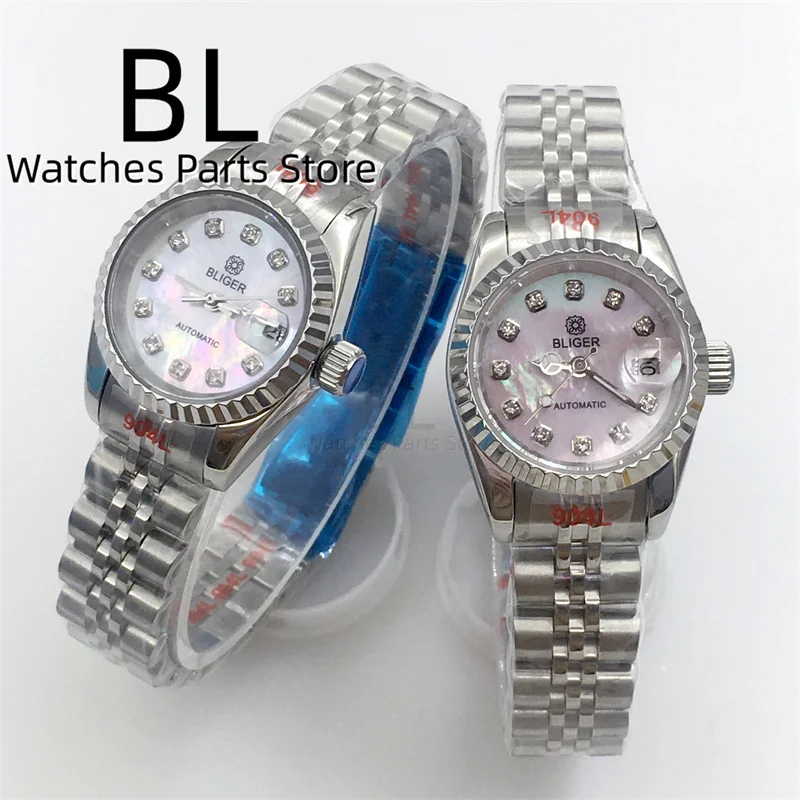
Classic Automatic Dress Watches, Day Date Automatic Watches, Perpetual Calendar Automatic Watches
Price range: $540.60 through $574.60 Select options This product has multiple variants. The options may be chosen on the product pageClassic Automatic Dress Watches, GMT Automatic Watches, GMT Pilot Watches
Price range: $1,240.86 through $1,463.33 Select options This product has multiple variants. The options may be chosen on the product pageClassic Automatic Dress Watches, Thin Automatic Dress Watches
$437.64 Select options This product has multiple variants. The options may be chosen on the product pageClassic Manual Wind Watches, Manual Wind Dress Watches
Price range: $425.50 through $462.50 Select options This product has multiple variants. The options may be chosen on the product page- $104.12 Select options This product has multiple variants. The options may be chosen on the product page
Classic Automatic Dress Watches, GMT Automatic Watches, GMT Dive Watches
Price range: $468.93 through $552.94 Select options This product has multiple variants. The options may be chosen on the product page
Beyond Thinness: Additional Features to Consider in Slim Watches
While slimness remains the defining characteristic, other features deserve consideration when selecting your timepiece:
Complications: Modern engineering allows even slim watches to include useful functions like date displays, moonphase indicators, and dual time zones. However, each addition typically adds some thickness, so prioritize complications you’ll actually use.
Water Resistance: Most slim watches offer at least basic water resistance (30-50 meters), sufficient for handwashing and rain. Some modern slim designs achieve 100m water resistance without significant thickness increases—a remarkable engineering achievement.
Crystal Material: The watch face covering affects both profile and durability:
- Mineral crystal offers good scratch resistance at moderate cost
- Sapphire crystal provides superior scratch protection but may add slightly to thickness
Acrylic crystal enables the thinnest profiles but scratches more easily (though scratches can be polished out)
Strap and Bracelet Options: The band should complement the slim case aesthetically. Thin leather straps maintain the sleek profile, while metal bracelets should taper appropriately to balance the case dimensions.
Power Features: For quartz watches, look for long-life batteries (3+ years). In mechanical pieces, consider power reserve duration—how long the watch runs without winding. Some slim automatic dress watches achieve impressive 40+ hour power reserves despite space limitations.
The key is selecting features that enhance rather than compromise the slim profile that attracted you initially. For a comprehensive understanding of how different watches compare dimensionally, the definitive watch case thickness comparison provides valuable context.
Are Slim Watches Durable Enough for Everyday Use?
One common concern about slim watches involves their perceived fragility. Let’s address some frequent questions:
Q: Are slim watches more prone to damage than thicker ones?
A: While extremely thin watches (under 7mm) may require more careful handling, modern slim watches in the 7-10mm range are engineered with everyday use in mind. Contemporary materials and case construction techniques have significantly improved durability compared to historical thin watches.
Q: Can slim watches handle minor impacts?
A: Yes. Quality slim watches incorporate shock protection systems that cushion the delicate movement components. While they may not be ideal for high-impact sports, they withstand normal daily activities perfectly well.
Q: What about water resistance?
A: Most slim watches offer 30-50m water resistance—sufficient for everyday exposure to moisture. This rating has more to do with gasket engineering than case thickness itself.
Q: How long do slim watches typically last?
A: With proper care, a quality slim watch should last decades. Many vintage ultra-thin watches from the 1950s and 1960s remain in excellent working condition today, demonstrating their longevity.
Q: Any special maintenance requirements?
A: Follow the standard service intervals recommended by the manufacturer (typically 3-5 years for mechanical watches). The main additional consideration is being mindful of the crown (winding mechanism), which may be more delicate on ultra-thin models.
The evolution of horological elegance has consistently improved durability alongside aesthetics, making modern slim watches much more robust than their historical predecessors.
The Timeless Appeal: Why Slim Watches Endure
As we’ve explored, the enduring popularity of slim watch cases stems from their remarkable synthesis of seemingly contradictory qualities: they’re simultaneously understated yet distinctive, minimalist yet expressive, practical yet sophisticated.
The comfort advantages alone would make slim watches worthy of consideration, but when combined with their aesthetic versatility and the technical mastery they represent, their appeal becomes comprehensive. They solve practical problems while making a refined style statement—the hallmark of truly excellent design.
Perhaps most tellingly, slim watches have remained relevant through decades of changing fashion trends. While case diameters have fluctuated dramatically—from the modest 32-34mm cases of mid-century to the oversized 44mm+ watches of recent decades and back to more moderate dimensions—the appeal of thinness has remained constant.
This consistency speaks to something fundamental about human aesthetics: we instinctively recognize and appreciate the challenge of creating something that performs beautifully with minimal excess. Whether in architecture, industrial design, or horology, achieving simplicity without sacrificing function represents a pinnacle of creative achievement.
For the discerning wearer, a slim watch offers the perfect balance—present when needed, never intrusive, always appropriate. In a world that often equates value with size, these timepieces remind us that refinement often comes in the spaces between, in what’s been thoughtfully removed rather than what’s been added.

